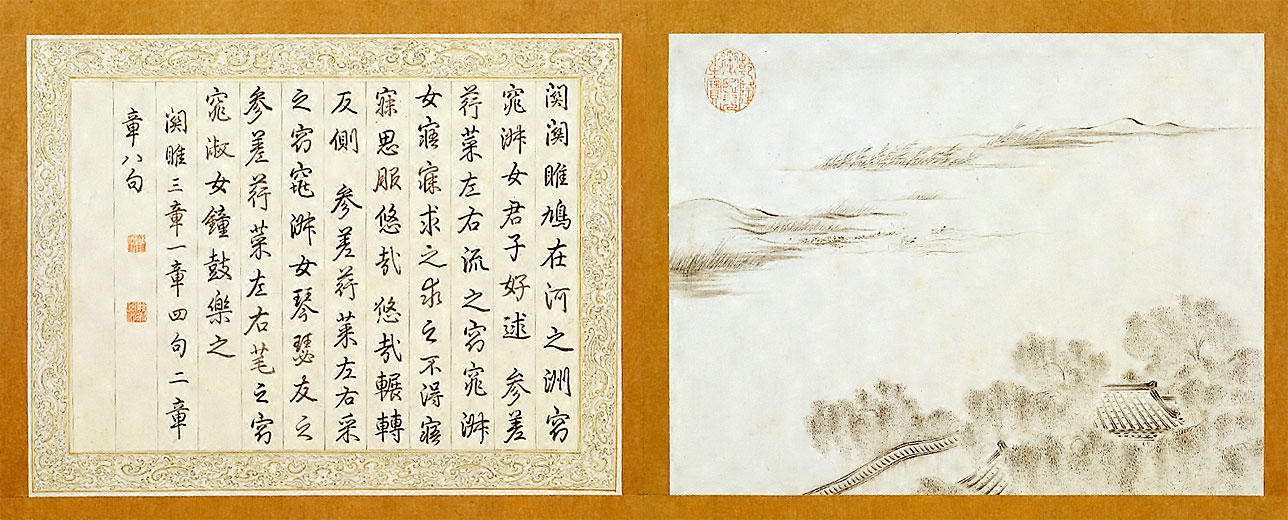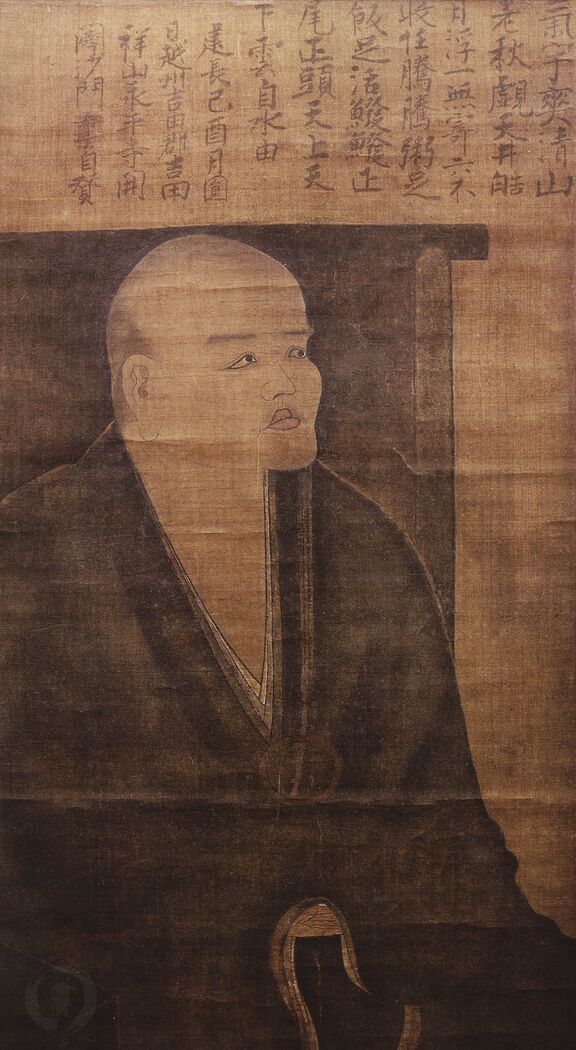|
Medieval Japanese Literature
Japan's medieval period (the Kamakura, Nanbokuchō and Muromachi periods, and sometimes the Azuchi–Momoyama period) was a transitional period for the nation's literature. Kyoto ceased being the sole literary centre as important writers and readerships appeared throughout the country, and a wider variety of genres and literary forms developed accordingly, such as the '' gunki monogatari'' and ''otogi-zōshi'' prose narratives, and ''renga'' linked verse, as well as various theatrical forms such as '' noh''. Medieval Japanese literature can be broadly divided into two periods: the early and late , the former lasting roughly 150 years from the late 12th to the mid-14th century, and the latter until the end of the 16th century. The early saw a continuation of the literary trends of the classical period, with court fiction (''monogatari'') continuing to be written, and composition of ''waka'' poetry reaching new heights in the age of the '' Shin-kokin Wakashū'', an anthology com ... [...More Info...] [...Related Items...] OR: [Wikipedia] [Google] [Baidu] |
Shin Kokin Wakashū1
Shin may refer to: Biology * The front part of the human leg below the knee * Shinbone, the tibia, the larger of the two bones in the leg below the knee in vertebrates Names * Shin (given name) (Katakana: シン, Hiragana: しん), a Japanese given name * Shin (Korean surname) (Hangul: 신, Hanja: 申, 辛, 愼), a Korean family name * Shin (Chinese: 新, which means "new"), spelled in Pinyin as Xin Fictional characters * Shin Akuma, a character in the Street Fighter series *Shin Asuka (other), multiple * Shin Malphur, a character in the video game '' Destiny 2: Forsaken'' * Kamen Rider Shin, a character in the Kamen Rider series *Seijuro Shin (進), a character in the manga and anime series ''Eyeshield 21'' * A character in the manga Dorohedoro * A character in the manga and anime ''Fist of the North Star'' Music * Shin (band) ( zh, 信樂團, links=no) * Shin (singer) (蘇見信), a Taiwanese singer and former lead singer of the band Shin * Shin, the drummer of the ... [...More Info...] [...Related Items...] OR: [Wikipedia] [Google] [Baidu] |
Taira Clan
The Taira was one of the four most important clans that dominated Japanese politics during the Heian, Kamakura and Muromachi Periods of Japanese history – the others being the Fujiwara, the Tachibana, and the Minamoto. The clan is divided into four major groups, named after the emperor they descended from: Kanmu Heishi, Ninmyō Heishi, Montoku Heishi, and Kōkō Heishi. The clan is commonly referred to as or , using the character's On'yomi for ''Taira'', while means " clan", and is used as a suffix for " extended family". History Along with the Minamoto, Taira was one of the honorary surnames given by the emperors of the Heian Period (794–1185 CE) to their children and grandchildren who were not considered eligible for the throne. The clan was founded when the Imperial Court grew too large, and the emperor ordered that the descendants of previous emperors from several generations ago would no longer be princes, but would instead be given noble surnames a ... [...More Info...] [...Related Items...] OR: [Wikipedia] [Google] [Baidu] |
Classical Chinese
Classical Chinese, also known as Literary Chinese (古文 ''gǔwén'' "ancient text", or 文言 ''wényán'' "text speak", meaning "literary language/speech"; modern vernacular: 文言文 ''wényánwén'' "text speak text", meaning "literary language writing"), is the language of the classic literature from the end of the Spring and Autumn period through to the either the start of the Qin dynasty or the end of the Han dynasty, a written form of Old Chinese (上古漢語, ''Shànɡɡǔ Hànyǔ''). Classical Chinese is a traditional style of written Chinese that evolved from the classical language, making it different from any modern spoken form of Chinese. Literary Chinese was used for almost all formal writing in China until the early 20th century, and also, during various periods, in Japan, Ryukyu, Korea and Vietnam. Among Chinese speakers, Literary Chinese has been largely replaced by written vernacular Chinese, a style of writing that is similar to modern spoken ... [...More Info...] [...Related Items...] OR: [Wikipedia] [Google] [Baidu] |
Nichiren
Nichiren (16 February 1222 – 13 October 1282) was a Japanese Buddhist priest and philosopher of the Kamakura period. Nichiren declared that the Lotus Sutra alone contains the highest truth of Buddhist teachings suited for the Third Age of Buddhism, insisting that the Sovereign of Japan and its people should support only this form of Buddhism and eradicate all others. He advocated the repeated recitation of its title, ''Nam(u)-myoho-renge-kyo'' as the only path to Buddhahood and held that Shakyamuni Buddha and all other Buddhist deities were extraordinary manifestations of a particular Buddha-nature termed ''Myoho-Renge'' that is equally accessible to all. He declared that believers of the Sutra must propagate it even under persecution. Nichiren was a prolific writer and his biography, temperament, and the evolution of his beliefs has been gleaned primarily from his own writings. He claimed the reincarnation of Jōgyō bodhisattva in a past life, and designated six s ... [...More Info...] [...Related Items...] OR: [Wikipedia] [Google] [Baidu] |
Shinran
''Popular Buddhism in Japan: Shin Buddhist Religion & Culture'' by Esben Andreasen, pp. 13, 14, 15, 17. University of Hawaii Press 1998, was a Japanese Buddhist monk, who was born in Hino (now a part of Fushimi, Kyoto) at the turbulent close of the Heian Period and lived during the Kamakura Period. Shinran was a pupil of Hōnen and the founder of what ultimately became the Jōdo Shinshū sect of Japanese Buddhism. Names Shinran's birthname was Matsuwakamaro. In accordance with Japanese customs, he has also gone by other names, including Hanen, Shakku and Zenshin, and then finally Shinran, which was derived by combining the names of Seshin (Vasubandhu in Japanese) and Donran (Tanluan’s name in Japanese). His posthumous title was Kenshin Daishi. For a while, Shinran also went by the name Fujii Yoshizane. After he was disrobed, he called himself Gutoku Shinran, in a self-deprecating manner which means "stubble-haired foolish one," to denote his status as "neither a monk, nor a l ... [...More Info...] [...Related Items...] OR: [Wikipedia] [Google] [Baidu] |
Dōgen
Dōgen Zenji (道元禅師; 26 January 1200 – 22 September 1253), also known as Dōgen Kigen (道元希玄), Eihei Dōgen (永平道元), Kōso Jōyō Daishi (高祖承陽大師), or Busshō Dentō Kokushi (仏性伝東国師), was a Japanese Buddhist priest, writer, poet, philosopher, and founder of the Sōtō school of Zen in Japan. Originally ordained as a monk in the Tendai School in Kyoto, he was ultimately dissatisfied with its teaching and traveled to China to seek out what he believed to be a more authentic Buddhism. He remained there for four years, finally training under Tiantong Rujing, an eminent teacher of the Caodong lineage of Chinese Chan. Upon his return to Japan, he began promoting the practice of zazen (sitting meditation) through literary works such as '' Fukanzazengi'' and '' Bendōwa''. He eventually broke relations completely with the powerful Tendai School, and, after several years of likely friction between himself and the establishmen ... [...More Info...] [...Related Items...] OR: [Wikipedia] [Google] [Baidu] |
Japanese Buddhism
Buddhism has been practiced in Japan since about the 6th century CE. Japanese Buddhism () created many new Buddhist schools, and some schools are original to Japan and some are derived from Chinese Buddhist schools. Japanese Buddhism has had a major influence on Japanese society and culture and remains an influential aspect to this day.Asia SocietBuddhism in Japan accessed July 2012 According to the Japanese Government's Agency for Cultural Affairs estimate, , with about 84 million or about 67% of the Japanese population, Buddhism was the religion in Japan with the second most adherents, next to Shinto, though a large number of people practice elements of both. According to the statistics by the Agency for Cultural Affairs in 2021, the religious corporation under the jurisdiction of the Ministry of Education, Culture, Sports, Science and Technology in Japan had 135 million believers, of which 47 million were Buddhists and most of them were believers of new schools of Bud ... [...More Info...] [...Related Items...] OR: [Wikipedia] [Google] [Baidu] |
Tsurezuregusa
is a collection of essays written by the Japanese monk Kenkō (兼好) between 1330 and 1332. The work is widely considered a gem of medieval Japanese literature and one of the three representative works of the zuihitsu genre, along with ''The Pillow Book'' and the '' Hōjōki''. Structure and Content ''Essays in Idleness'' comprises a preface and 243 passages, varying in length from a single line to a few pages. Kenkō, being a Buddhist monk, writes about Buddhist truths, and themes such as death and impermanence prevail in the work, although it also contains passages devoted to the beauty of nature as well as some accounts of humorous incidents. The original work was not divided or numbered; the division can be traced to the 17th century. The work takes its title from its prefatory passage: What a strange, demented feeling it gives me when I realise I have spent whole days before this inkstone, with nothing better to do, jotting down at random whatever nonsensical thoughts t ... [...More Info...] [...Related Items...] OR: [Wikipedia] [Google] [Baidu] |
Kamo No Chōmei
was a Japanese author, poet (in the waka form), and essayist. He witnessed a series of natural and social disasters, and, having lost his political backing, was passed over for promotion within the Shinto shrine associated with his family. He decided to turn his back on society, took Buddhist vows, and became a hermit, living outside the capital. This was somewhat unusual for the time, when those who turned their backs on the world usually joined monasteries. Along with the poet-priest Saigyō he is representative of the literary recluses of his time, and his celebrated essay '' Hōjōki'' ("An Account of a Ten-Foot-Square Hut") is representative of the genre known as " recluse literature" (sōan bungaku). Early life Born with the name Kamo no Nagaakira, he was the second son of Kamo no Nagatsugu, ''sho-negi'' or superintendent, of the Lower Kamo ( Shimogamo) shrine. He was also known by the title Kikudaifu. The exact year of his birth is unknown, but thought to be either 115 ... [...More Info...] [...Related Items...] OR: [Wikipedia] [Google] [Baidu] |
Hōjōki
, variously translated as ''An Account of My Hut'' or ''The Ten Foot Square Hut'', is an important and popular short work of the early Kamakura period (1185–1333) in Japan by Kamo no Chōmei. Written in March 1212, the work depicts the Buddhist concept of impermanence (''mujō'') through the description of various disasters such as earthquake, famine, whirlwind and conflagration that befall the people of the capital city Kyoto. The author Chōmei, who in his early career worked as court poet and was also an accomplished player of the biwa and koto, became a Buddhist monk in his fifties and moved farther and farther into the mountains, eventually living in a 10-foot square hut located at Mt. Hino. The work has been classified both as belonging to the zuihitsu genre and as Buddhist literature. Now considered as a Japanese literary classic, the work remains part of the Japanese school curriculum. The opening sentence of ''Hōjōki'' is famous in Japanese literature as an express ... [...More Info...] [...Related Items...] OR: [Wikipedia] [Google] [Baidu] |






